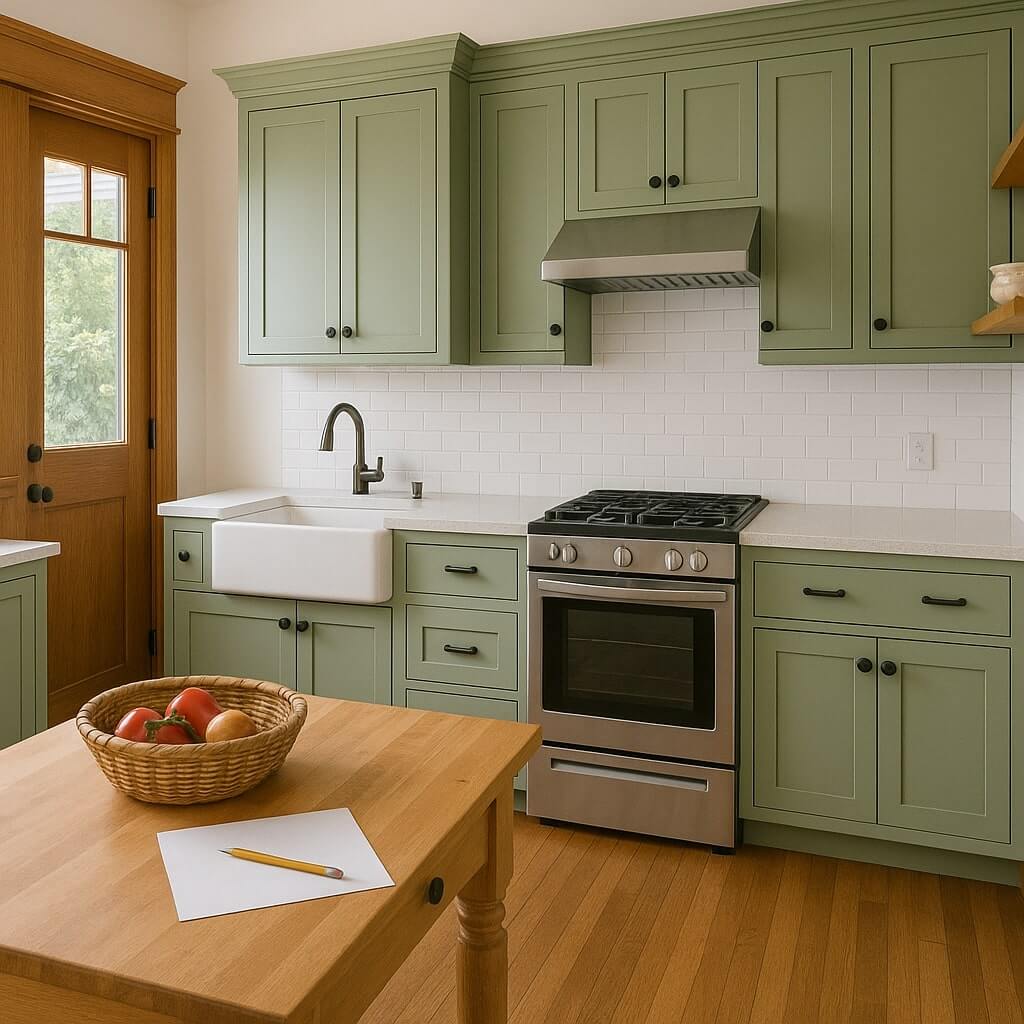If you’re considering a kitchen remodel, having a solid schedule template can make all the difference. It helps you stay organized and on track from design to completion. You’ll want to outline key milestones and set a realistic timeline to avoid common pitfalls. But what happens when unexpected issues arise? Understanding how to adapt your schedule is just as important. Let’s explore the essential elements that can lead to a successful transformation.
Key Takeaways
- Define clear project milestones to organize the kitchen remodel schedule effectively.
- Break down tasks into manageable segments with specific deadlines for tracking progress.
- Allocate buffer time in the timeline to accommodate unexpected challenges or delays.
- Regularly check in on progress and adjust priorities to maintain project momentum.
- Utilize a detailed budget breakdown to ensure financial alignment throughout the remodeling phases.
Understanding the Kitchen Remodel Process
When you commence a kitchen remodel, understanding the process can help you navigate the complexities and make informed decisions.
First, familiarize yourself with current kitchen design trends to guarantee your space feels modern and functional.
Next, identify potential remodeling challenges, such as structural issues or plumbing concerns, that could arise during the project. This proactive approach allows you to address obstacles before they escalate, keeping your timeline on track.
Setting Your Goals and Budget
Before you start your kitchen remodel, it’s essential to define your objectives.
Consider what you want to achieve, whether it’s more space, improved functionality, or a fresh look.
Once you have your goals in mind, establish a budget that aligns with those objectives to keep your project on track.
Define Your Objectives
Setting clear objectives is essential for a successful kitchen remodel, as it lays the foundation for your project. Start by determining your desired kitchen layout and the appliances you need. Think about functionality, style, and efficiency. Here’s a helpful table to guide your objective-setting:
| Objective | Description | Importance |
|---|---|---|
| Kitchen Layout | Define the flow and space usage | Enhances usability |
| Appliance Selection | Choose energy-efficient options | Saves on utilities |
| Aesthetic Goals | Decide on style and finishes | Reflects personal taste |
Establish a Budget
Establishing a budget is essential for keeping your kitchen remodel on track and ensuring you don’t overspend. Start by creating a budget breakdown that outlines all potential expenses, from cabinets and countertops to appliances and labor.
Conduct thorough cost estimation for each item, factoring in quality and style preferences. Don’t forget to allocate funds for unexpected expenses, as they often arise during renovations.
Creating a Detailed Timeline
To keep your kitchen remodel on track, you’ll want to establish clear project milestones.
By breaking down the project into manageable tasks, you can allocate time effectively for each phase.
This detailed timeline will help you stay organized and guarantee everything runs smoothly.
Establishing Project Milestones
When you map out your kitchen remodel, breaking the project into clear milestones can make the process feel more manageable.
Start by identifying key phases, like design, demolition, and installation. Assign each milestone a specific deadline to keep you on track.
Use milestone tracking techniques to monitor progress and verify you’re meeting project deadlines. Regularly review your timeline to adapt if unexpected delays arise.
This structured approach not only helps in maintaining focus but also boosts motivation as you complete each phase.
Allocating Time for Tasks
While you may feel overwhelmed by the many tasks involved in a kitchen remodel, creating a detailed timeline can simplify the process considerably.
Start by focusing on task prioritization; identify which tasks must be completed first, like demolition or plumbing. Next, use time estimation for each task, considering potential delays and the availability of materials.
Break down larger tasks into smaller, manageable steps, and assign realistic deadlines. Don’t forget to include buffer time for unexpected issues.
Phases of a Kitchen Remodel
As you begin your kitchen remodel, understanding the various phases is essential for a smooth and successful transformation.
Each phase plays a vital role, and knowing what to expect can keep you on track.
- Initial Planning: Define your goals and budget.
- Design Considerations: Choose layouts and styles that suit your needs.
- Material Selection: Research and select the best materials for durability and aesthetics.
- Implementation: Schedule and execute the actual remodel work.
Key Milestones to Track
Tracking key milestones during your kitchen remodel is essential for staying organized and ensuring timely progress.
Start with finalizing your kitchen design; this sets the foundation for everything else. Next, focus on material selection, ensuring you’ve chosen everything from countertops to flooring.
Finalizing your kitchen design is crucial; it establishes the groundwork for material selection and the entire remodel process.
Once these elements are in place, schedule demolition, followed by installation phases like plumbing and electrical work. Don’t forget to monitor inspections and approvals, as these can impact timelines.
Finally, track the finishing touches, such as cabinetry and appliances. Keeping an eye on these milestones helps you avoid delays and keeps your project on track.
Tips for Staying on Schedule
Staying on schedule during your kitchen remodel requires proactive planning and effective communication.
To keep your project on track, focus on time management and project delegation. Here are some tips to help you stay organized:
- Create a detailed timeline and stick to it.
- Assign specific tasks to your team or contractors.
- Regularly check in on progress and address issues promptly.
- Adjust your priorities as necessary to maintain momentum.
Adjusting Your Schedule as Needed
While unexpected challenges can arise during a kitchen remodel, adjusting your schedule is crucial to keep everything running smoothly.
Embrace flexibility strategies to adapt to delays or changes in plans. Regularly reassess your schedule, prioritizing tasks based on current progress and resource availability. If a supplier delays delivery, adjust timelines for installation accordingly.
Communicate with your contractor and team to guarantee everyone stays informed and aligned. By maintaining open lines of communication and being willing to pivot, you’ll minimize stress and keep your project on track.
Conclusion
To sum up, using a kitchen remodel schedule template can make your renovation project more manageable and efficient. By understanding the process, setting clear goals, and tracking key milestones, you’re better equipped to handle challenges as they arise. Remember to stay flexible and adjust your timeline when necessary, ensuring your dream kitchen becomes a reality without unnecessary stress. With careful planning and organization, you’ll enjoy a smooth transformation and a space that truly reflects your style.




